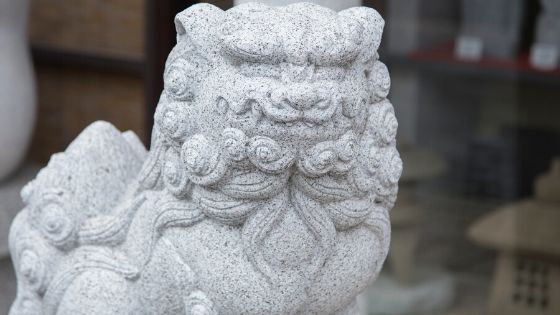
Komainu (狛犬), guardian dogs at Japanese shrines, originally came from India, the origin of Buddhism. It is said that in ancient India, people used to place statues of lion near Buddha statue, for the purpose of protecting it. That tradition has spread into China, Korea and Japan.
Some people said that the word “komainu” come from the fact that the statue came from Goryeo (高麗, Ko-rai in Japanese), an ancient state in Korea. However, other people said that Japanese envoys to Tang Dynasty brought komainu into Japan. We can’t tell what is the truth, but the clear thing is that the design of komainu we can see now, has developed in Japan.
Komainu is always set as a pair. But if you look at guardian dogs carefully, you would notice that both of them have a different expression. Komainu on the right side opens his mouth. The one on the left side, on the other hand, closes his mouth and has a horn.
Both of them are imaginary animals, whose design is inspired by a lion. The reason why komainu opens (closes) his mouth is that Nio Guardians, standing in front of Japanese Buddhist temples, also have the similar expression. Surprisingly, however, not all komainu have this design and some of them are placed in Buddhist temples, too, not in Shinto shrines.
For example, Kiyomizu Temple in Kyoto has a pair of big komainu at the entrance. The design is unique; both of them open their mouths.

コメント